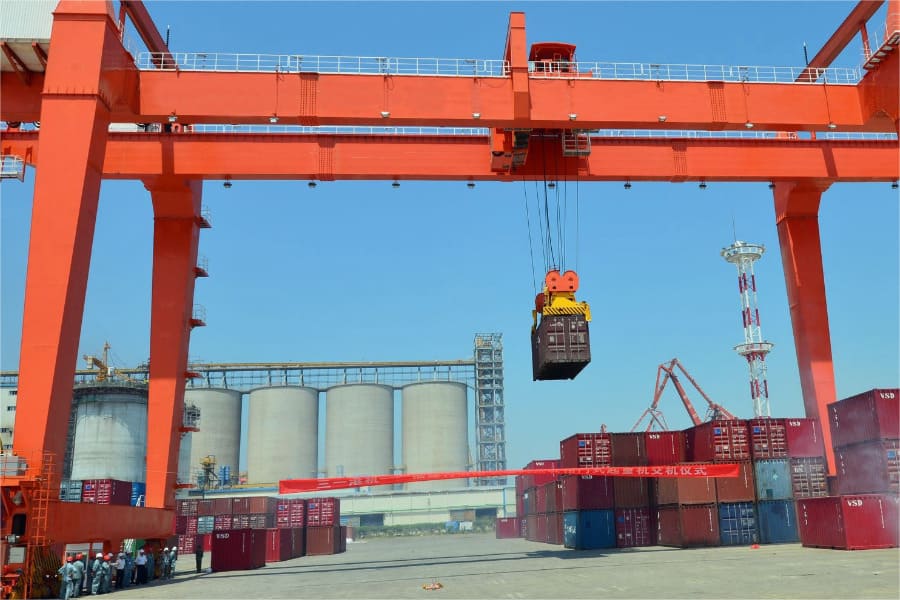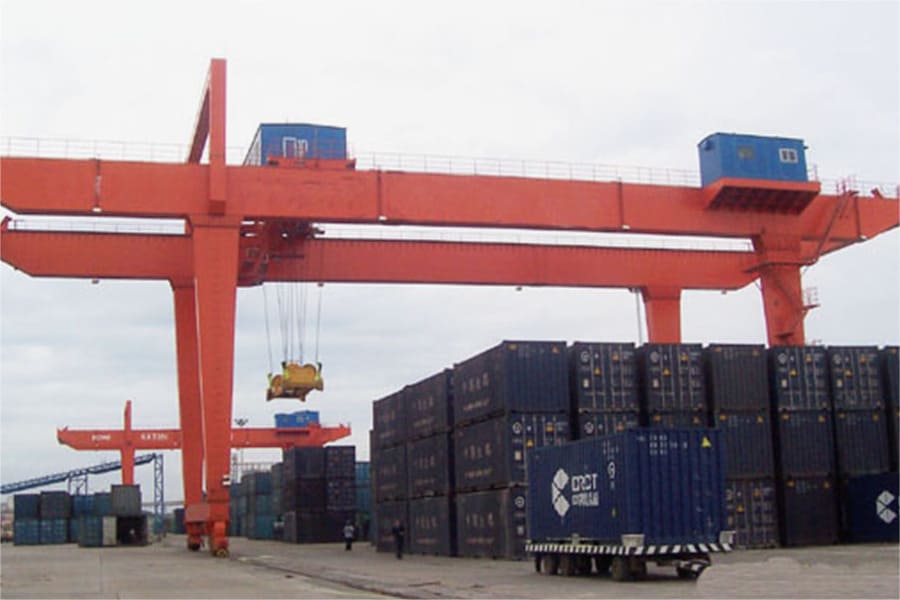Rail mounted gantry crane with hooks is applied outside warehouse or railway sideways to do common lifting and unloading works. This kind of crane is composed of bridge, support legs, crane travelling organ, trolley, electric equipment, strong lifting winch. The frame adopts box-type welding mechanism. Crane travelling mechanism adopts separate driver. All mechanisms are operated in the driver cabin. Power is supplied by cable or slide wire. There are different capacity gantry cranes on rails for your choice according to your different use.

Die rmg crane is supported by an A-frame with two legs. The trolley uses soft cables to conduct electricity, and the mast uses slide wires or soft cables to conduct electricity.
It is ideal for outdoor applications where lifting facilities are provided, without the cost of a building or any supporting steel structure.
Main features of the rmg crane:
Simple structure in linear type, easy to install and maintain.
Adopting advanced world famous brand components in pneumatic parts, electric parts and operation parts.
High pressure double crank to control the die opening and closing.
Running in a high automation and intelligent, no pollution.
Apply a linker to connect with the air conveyor, which can directly inline with filling machine.

Unlike other types of cranes that operate on wheels, rail mounted gantry cranes utilize a rail travel system. This system consists of a set of rails installed on the ground, providing a dedicated path for the crane to move along. The rails ensure smooth and precise movement of the crane, allowing it to traverse large distances within the container yard. The rail travel system also contributes to the stability of the crane, enabling it to handle heavy loads with ease.
In conclusion, gantry cranes on rails are essential equipment for container handling operations in ports and intermodal yards. Their function revolves around efficient container lifting, transport, and stacking. With their rail travel systems, they provide stability and precision in movement.





















